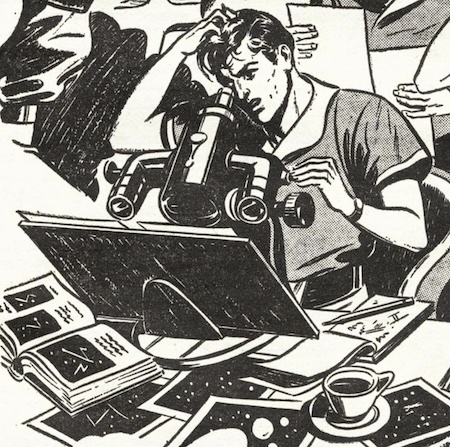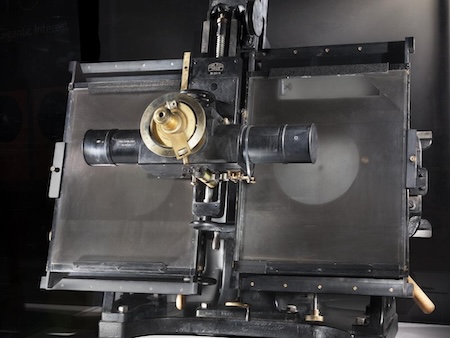Science Fiction
Dictionary
A B C D E F G H I J K L M N O P Q R S T U V W X Y Z
Latest By
Category:
Armor
Artificial
Intelligence
Biology
Clothing
Communication
Computers
Culture
Data Storage
Displays
Engineering
Entertainment
Food
Input Devices
Lifestyle
Living Space
Manufacturing
Material
Media
Medical
Miscellaneous
Robotics
Security
Space Tech
Spacecraft
Surveillance
Transportation
Travel
Vehicle
Virtual
Person
Warfare
Weapon
Work
"Why does a creative person create? It's a type of compulsion. I like to explore new ideas."
- Bart Kosko
| Star-Globe (3D Map) | ||
| A celestial star map, done in three dimensions. |
| According to spectroscopic analysis, they’re maintaining the same distance from us, each one of them. So they’re really moving — if they’re moving — in circles around us. But the circles are straight, as it were. I mean, it seems that we’re in the center of those circles, so the stars that are moving aren’t coming closer to us or receding.”
“You could draw lines for those circles?” “On a star-globe, yes. It’s been done. They all seem to be heading for a certain area of the sky, but not for a given point. In other words, they don’t intersect.” “What part of the sky are they going to?” “Approximately between Ursa Major and Leo, Mike. The ones farthest from there are moving fastest, the ones nearest are moving slower... Dr. Hale groaned. “Mike, I’m going to have to go to the university to work this out. So I can have access to the library and the star-globe there. You’re making an honest man out of me, Mike. Whatever kind of Scotch this is, wrap me up a bottle.” “It’s Tartan Plaid. A quart?” “A quart, and make it snappy. I’ve got to see a man about a dog-star.” |
| Technovelgy from Pi in the Sky,
by Frederic Brown. Published by Thrilling Wonder Stories in 1945 Additional resources -
|
I'd also like to point out that the story makes use of the blink comparator, which uses two photographs of the same star field to let you quickly compare one to the other; the cover picture provides a glimpse of this device.

(The Blink-Microscope used in 'Pi in the Sky')
A blink-mike provides accommodation for two photographic plates taken of the same section of sky, but at different times. These plates are carefully juxtaposed and the operator may alternately focus his vision, through the eyepiece, first upon one and then upon the other, by means of a shutter. If the plates are identical, the operation of the shutter reveals nothing, but if one of the dots on the second plate differs from the position it occupied on the first, it will call attention to itself by seeming to jump back and forth as the shutter is manipulated.
Compare this to the actual device used to discover Pluto. It was invented in 1904 by physicist Carl Pulfrich at Carl Zeiss AG.

(The Blink Comnparator used to find Pluto)
The photographic plates Tombaugh was comparing with this machine were 36 x 43 centimeters (14 x 17 inches), and were long exposures taken with a telescopic camera that sported a powerful 33-centimeter (13-inch) diameter lens. Tombaugh took exposures at night, covering areas of the sky where Percival Lowell had predicted years earlier that a planet must be lurking. He then developed those plates, and during the day compared them, spending weeks and months searching vast depths of space looking for something moving among the thousands of stars exposed on those plates. In February 1930, finally, he found something that he could not explain away as a nearby asteroid or some other form of space debris. It moved too slowly to be an asteroid. If it was a planet, it was farther than Neptune, just as Lowell predicted.Tombaugh operated the instrument, built by the Zeiss company and popularly called a “blink comparator,” by rotating a small dial that flipped a mirror back and forth between the beams from two microscopes. Blinking between two plates taken on January 23 and 29, 1930, he found something. The below animation is flipping between the two plates. Can you find it? If you're having trouble spotting Pluto, take a look at the next animation with arrows marking the elusive object. It’s not an easy job, to be sure. The time exposures do not always yield the same brightness, and the orientation of the two fields is not exact.
Comment/Join this discussion ( 0 ) | RSS/XML | Blog This |
Additional
resources:
More Ideas
and Technology from Pi in the Sky
More Ideas
and Technology by Frederic Brown
Tech news articles related to Pi in the Sky
Tech news articles related to works by Frederic Brown
| Will Space Stations Have Large Interior Spaces Again? |
| Reflect Orbital Offers 'Sunlight on Demand' And Light Pollution |
| Chrysalis Generation Ship to Alpha Centauri |
| The First Space Warship For Space Force |
Want to Contribute an
Item?
It's easy:
Get the name of the item, a
quote, the book's name and the author's name, and Add
it here.
| <Previous | Next> |
|
|
|
Technovelgy (that's tech-novel-gee!) is devoted to the creative science inventions and ideas of sf authors. Look for the Invention Category that interests you, the Glossary, the Science Fiction Invention Timeline, or see what's New.
|
Science Fiction
Timeline
1600-1899
1900-1939
1940's 1950's
1960's 1970's
1980's 1990's
2000's 2010's
'Power could be compressed thus into an inch-square cube of what looked like blue-white ice'
'It's so light that you can set it up in five minutes by yourself...'
'Heavy penalties... were to be applied to any one found driving manually-controlled machines.'
'Buy a Little Dingbat... electropen, wrist watch, pocketphone, pocket radio, billfold ... all in one.'
'... an elastic, tinted material that had all the feel and appearance of human flesh and epidermis.'
'It is remarkable that the long leverages of their machines are in most cases actuated by a sort of sham musculature...'
